Integrations Webhooks
The Testkube Dashboard allows you to easily create and manage the Webhooks defined for your Environment.
Check out the Webhooks document to learn how Webhooks can be used in Testkube.
Webhooks are created under an Environment and are managed from the "Webhooks" tab in the integrations panel:
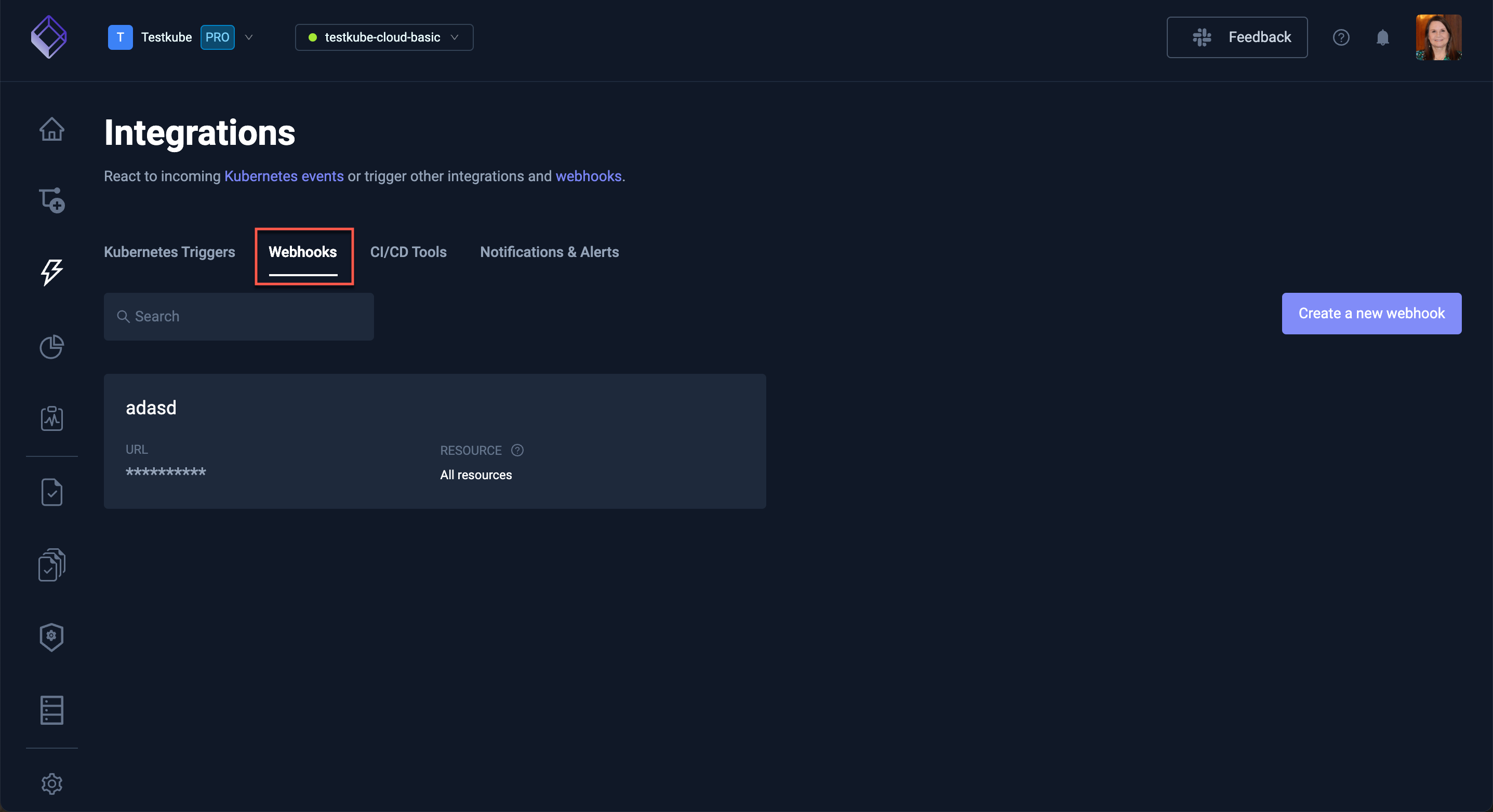
Creating a New Webhook
Select the Create a new webhook button to create a new Webhook.
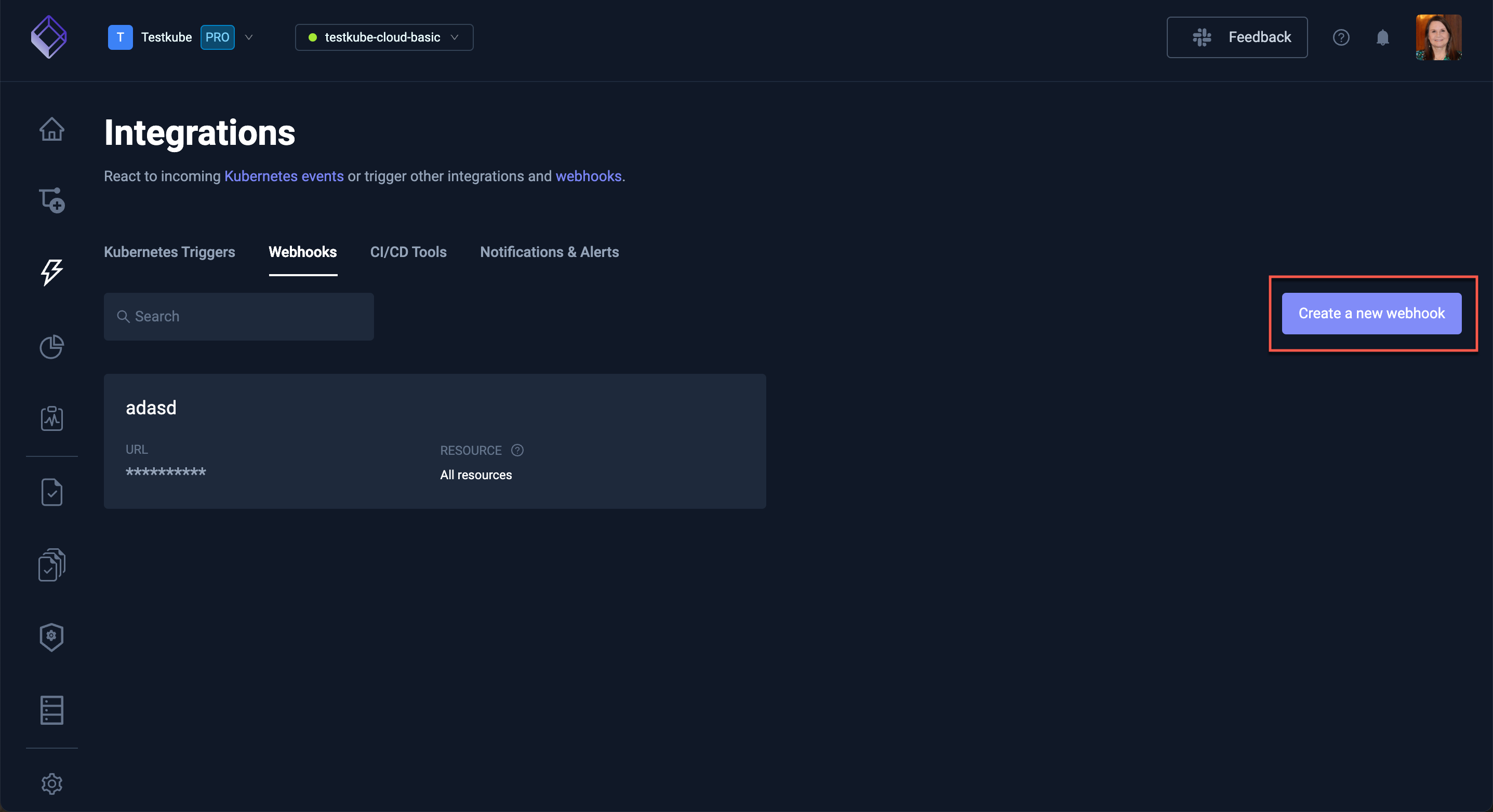
Webhook Condition
You will initially be prompted for:
- the Name of the Webhook - must be a valid Kubernetes name as Webhooks are stored as CRDs in your cluster.
- the Resources Identifier for which resources to monitor, can either be a list of Kubernetes Labels or a specific resource name.
- the Triggered events that will execute the Webhook.
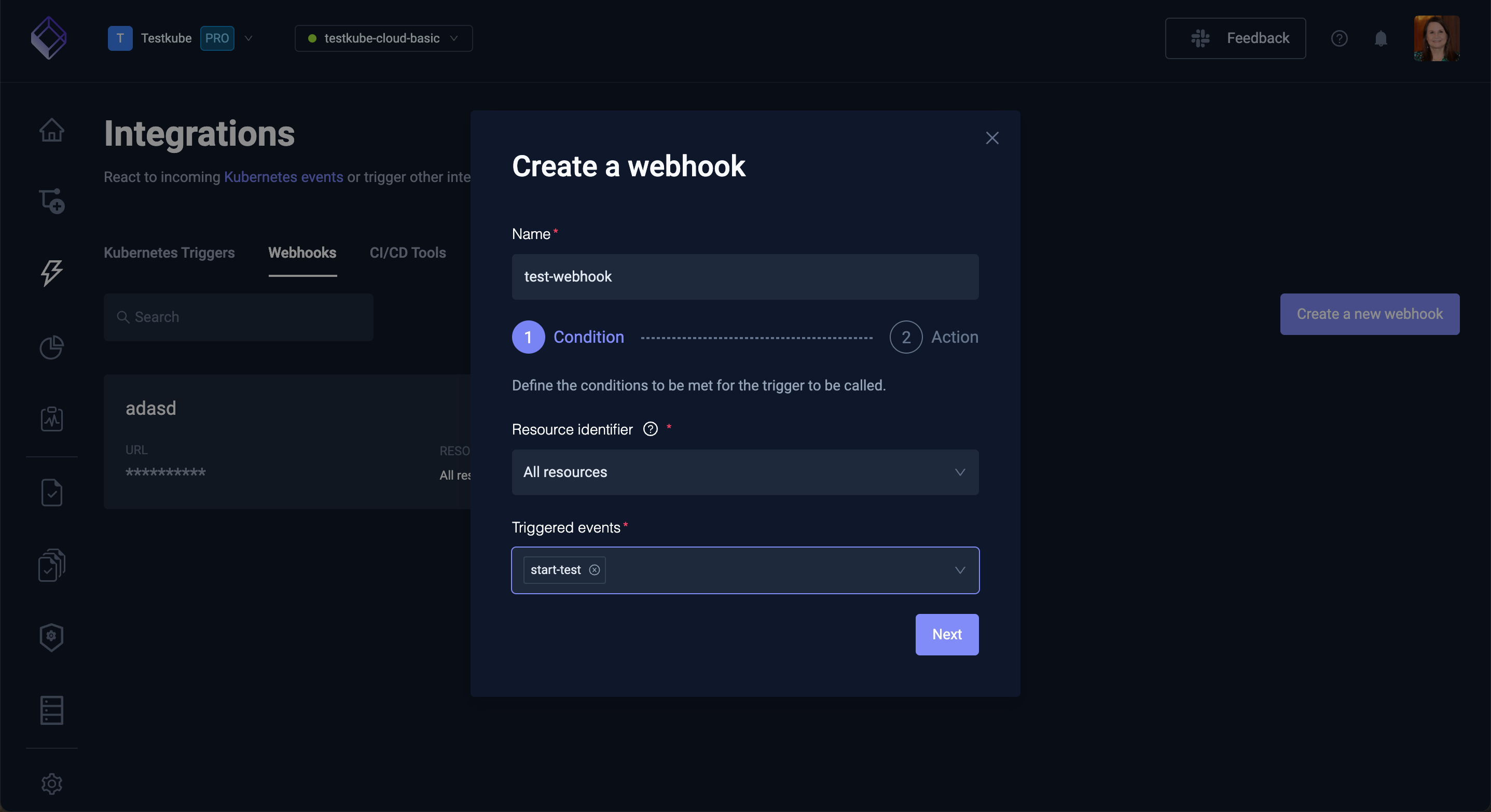
Webhook Action
The next step will prompt you for the target URI that will be invoked for your Webhook:
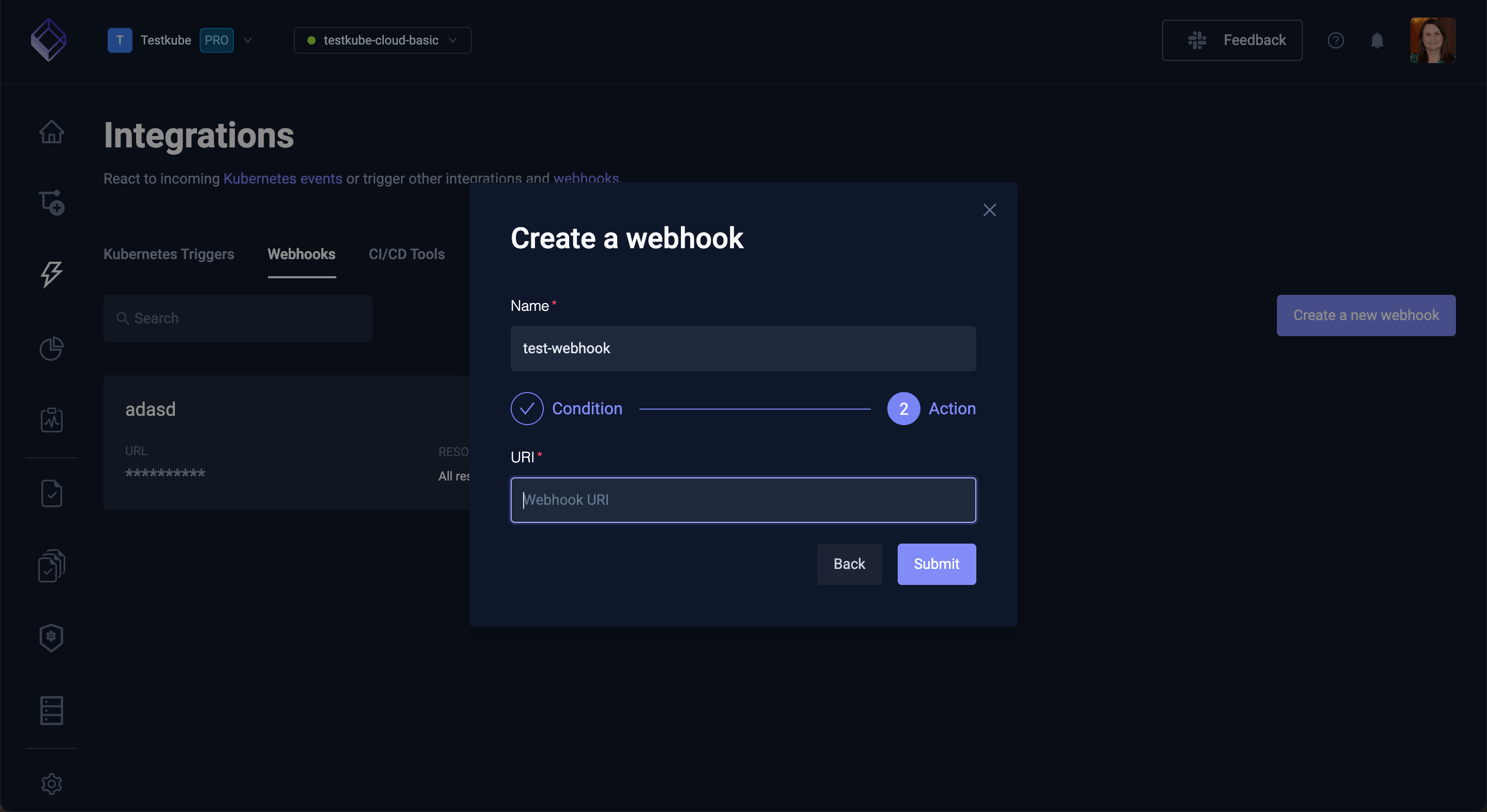
Webhook Settings
Selecting a Webhook from the list of Webhooks shows its Settings.
As with the wizard above to create a Webhook, the Settings tab only expose basic Webhook configurations, for more advanced selector and payload you can modify the generated YAML directly in the Definition tab for your Webhook.
General
The General tab allows you to modify the name of the Webhook, temporarily enable/disable it, and delete it if needed.
You can disable a Webhook for specific Workflow Executions also - Read More
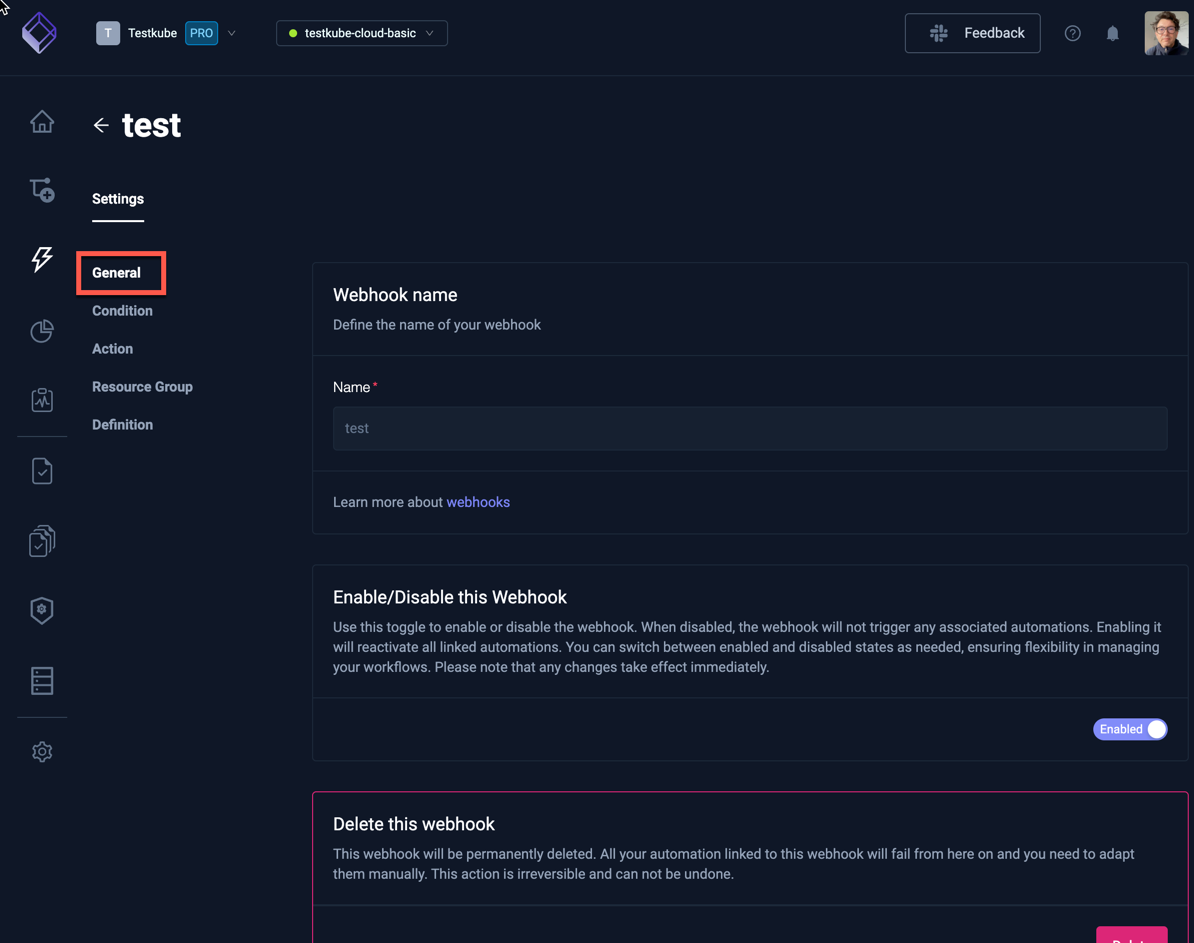
Condition
Condition shows the conditions met for the current Webhook to be called.
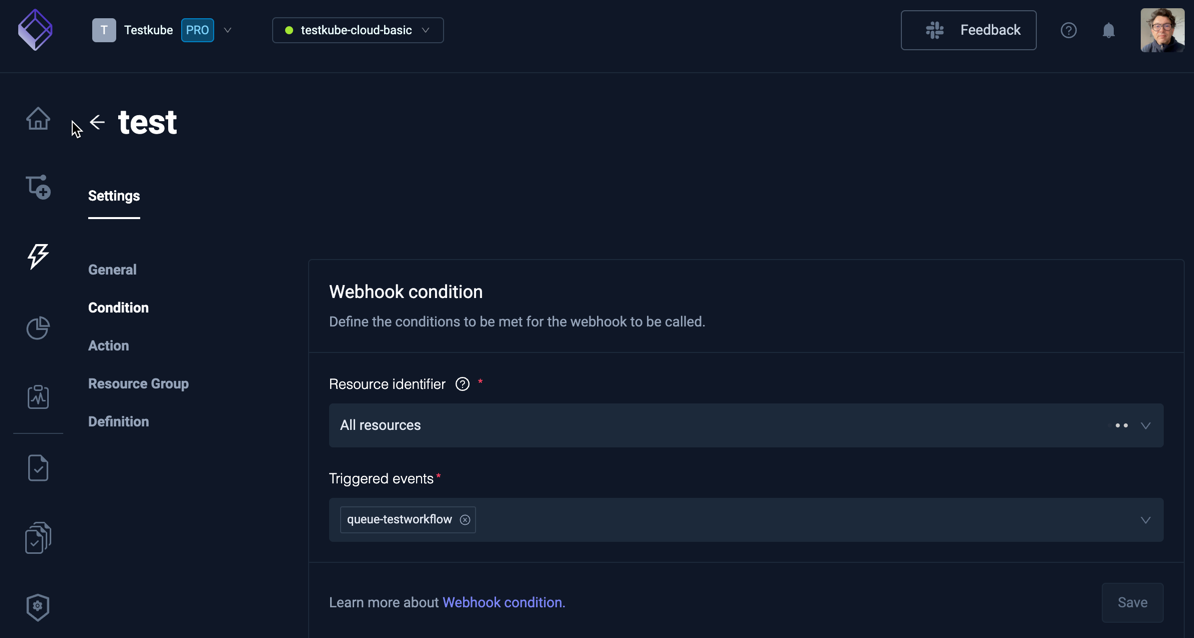
Action & Payload
Action defines the target URI we will call with this Webhook. The Custom Payload field allows you to modify the payload to be sent - Read More.
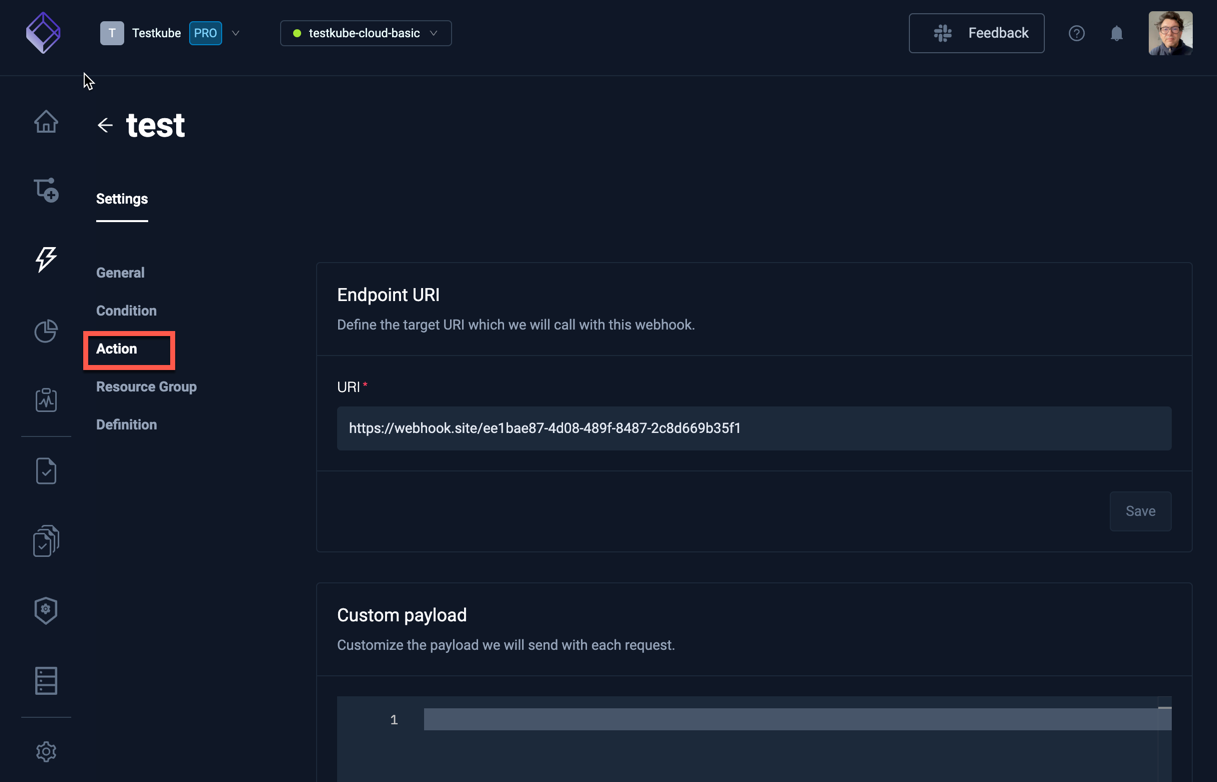
Resource Group
Resource Group defines the Resource Group this Webhook belongs to - Read More about Resource Groups
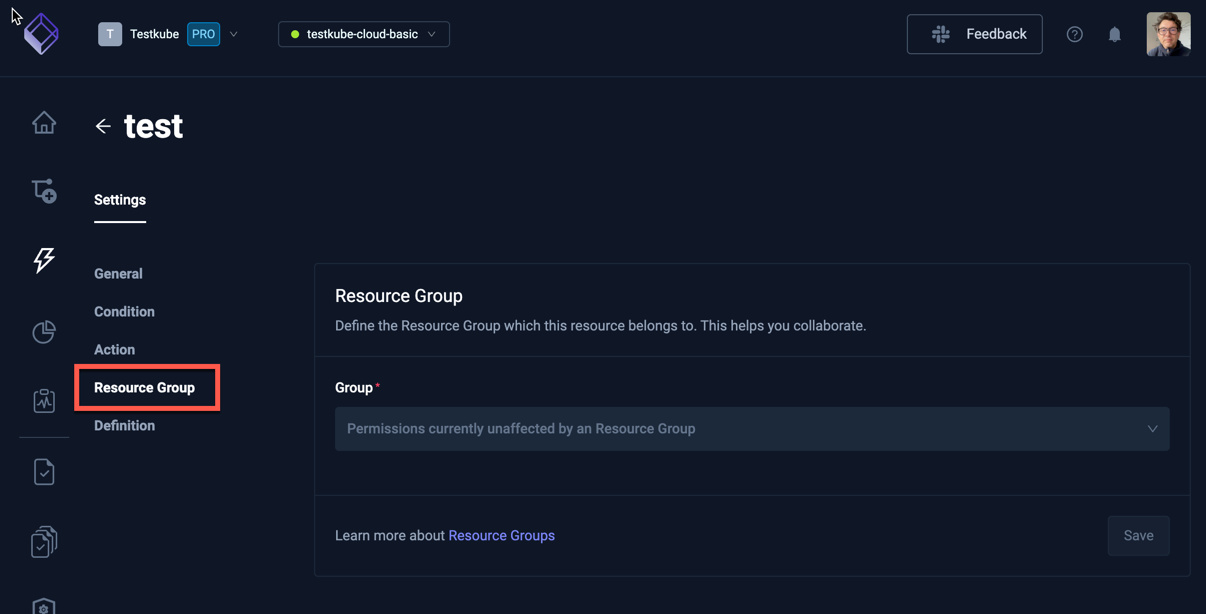
Definition
Definition shows the underlying YAML for your Webhook, allowing you to manually configure your Webhook vs using the previous tabs.
If you want to hide the Webhook YAML definition in the Dashboard because it contains sensitive information you can enable Webhooks URL Masking under the Organization Product Features, which will hide the Definition tab under the Webhook Settings.
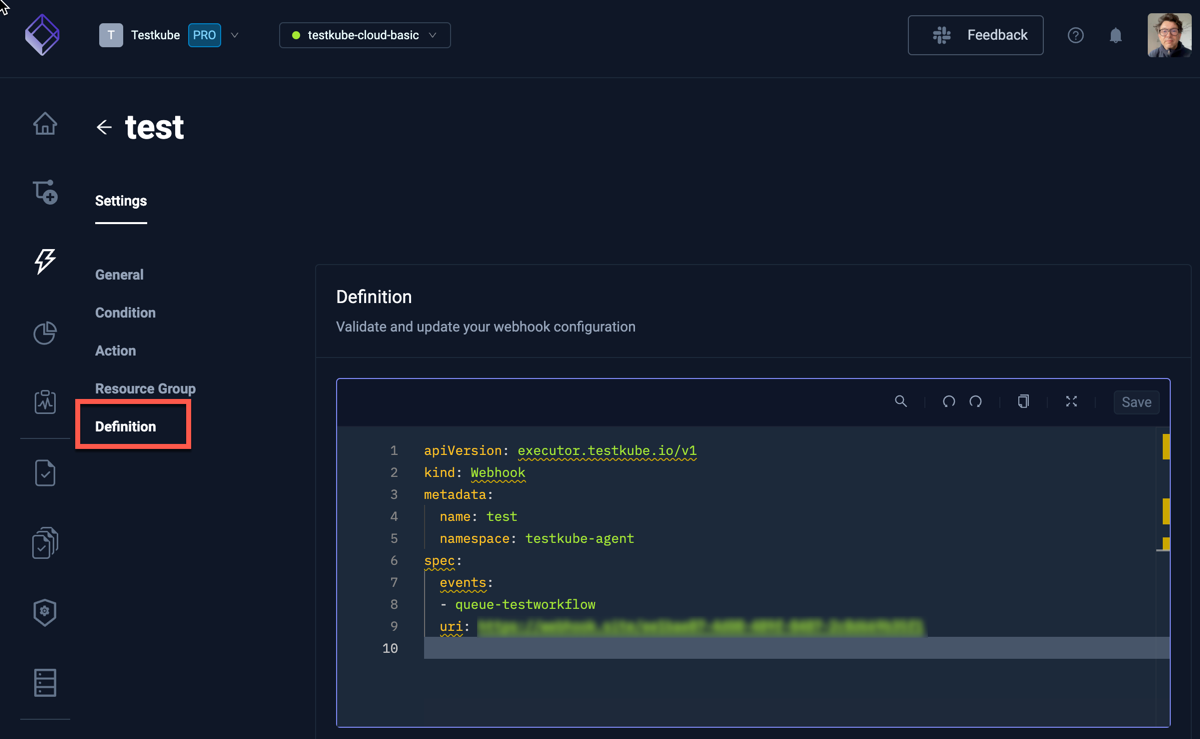
Credentials
Webhooks often need to call external systems that require authentication (for example, API tokens or secrets).
Instead of hard-coding these sensitive values into your Webhook definition,
Testkube lets you securely inject them from Credentials using the {{credentials(<NAME>)}} template function.
You can reference Credentials in:
- The Webhook URL
- Headers
- The payload template
Example:
apiVersion: executor.testkube.io/v1
kind: Webhook
metadata:
name: example-webhook
spec:
events:
- end-testworkflow-success
uri: https://webhook.example.com/test?token={{credential('TOKEN')}}
headers:
X-API-Token: "{{credential('HEADER_TOKEN'}}"
selector: test-type=k6
payloadTemplate: "This template includes an inline secret: {{credential('SECRET'}}"
Visit our Credentials docs to learn how to create and manage Credentials used in Webhooks.